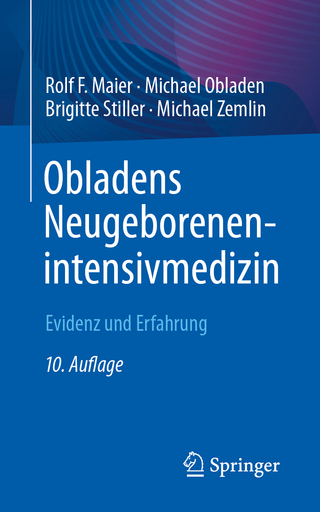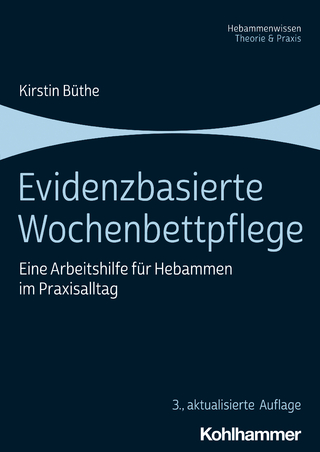
A Pocket Guide for Student Midwives
Wiley-Blackwell (Verlag)
978-0-470-01978-8 (ISBN)
- Titel erscheint in neuer Auflage
- Artikel merken
A Pocket Guide for Student Midwives is a must–read for both degree and diploma student midwives as well previously registered nurses. Focusing first on the language of midwifery, the book then goes on to explore common conditions, procedures, emergency situations, and supporting information.
This book is written with both degree and diploma student midwives in mind. It is split into two sections, each alphabetical. The first section contains some of the language of midwifery: terms, abbreviations and definitions. The second section contains common conditions, procedures, emergency situations, and supporting information. Each topic includes further factors that involve recognition, prevention, and actions to take in an emergency situation that may be in the form of flow/action charts. The procedures that are included have an overview of the ′how to′, (frequently including the preparation needed); and the ′why′, supported by research or evidence, and Midwives rules and standards (NMC 2004b) and The NMC code of professional conduct: standards for conduct, performance and ethics (NMC 2004a). The references used provide useful evidence to support practice. Finally, the supporting information is varied and ranges from details about Government and international initiatives to available support groups and useful websites.
Stella McKay–Moffat and Pam Lee, Faculty of Health, Edge Hill College, Ormskirk, Lancashire. Both Stella and Pam are very experienced midwives and midwifery lecturers, having taught a range of learners from pre–registration students to qualified staff.
About the authors ix
Foreword, by Dame Lorna Muirhead, DBE, President of the Royal College of Midwives 1997 2004 x
Preface xi
Section 1 The Language of Midwifery
Terms, abbreviations, definitions 1
Section 2 Quick Reference Topics
Conditions, procedures, emergency situations, supporting information, e.g. voluntary organisations 20
Figures Flow / action charts
1 Antepartum haemorrhage 31
2 Neonatal resuscitation 38
3.1 Cord prolapse presentation at home 70
3.2 Cord prolapse presentation in hospital 71
4 Apgar score 80
5.1 Management of third stage of labour physiological and active 82
5.2 Management of third stage of labour alternative active management 83
6 Disseminated intravascular coagulation (DIC) 95
7 Eclampsia 97
8 Genetic inheritance, e.g. PKU 163
9 Post–partum haemorrhage primary 178
10 Post–partum haemorrhage secondary 179
11.1 Retained placenta at home 202
11.2 Retained placenta in hospital 203
12 Shoulder dystocia 208
13 Uterine inversion 229
14 Uterine rupture 231
Diagrams
1.1, 1.2, 1.3 Delivery of occipito–posterior position 84 85
2.1, 2.2, 2.3 Delivery of face presentation 86 87
3.1 Normal haemoglobin composition 110
3.2.1, 3.2.2 Normal adult haemoglobins 110
3.3 Normal fetal haemoglobin 110
3.4.1, 3.4.2 Sickle cell haemoglobins 111
3.5.1, 3.5.2 Alpha thalassaemia 113
3.6.1, 3.6.2 Beta thalassaemia 114
4 Heel prick sites 118
5.1 to 5.9 Placenta types 166 170
6 Stations of the head in the pelvis 233
References 237
| Erscheint lt. Verlag | 1.9.2006 |
|---|---|
| Verlagsort | Hoboken |
| Sprache | englisch |
| Maße | 152 x 230 mm |
| Gewicht | 380 g |
| Themenwelt | Medizin / Pharmazie ► Gesundheitsfachberufe ► Hebamme / Entbindungspfleger |
| Medizin / Pharmazie ► Medizinische Fachgebiete | |
| ISBN-10 | 0-470-01978-6 / 0470019786 |
| ISBN-13 | 978-0-470-01978-8 / 9780470019788 |
| Zustand | Neuware |
| Haben Sie eine Frage zum Produkt? |
aus dem Bereich



